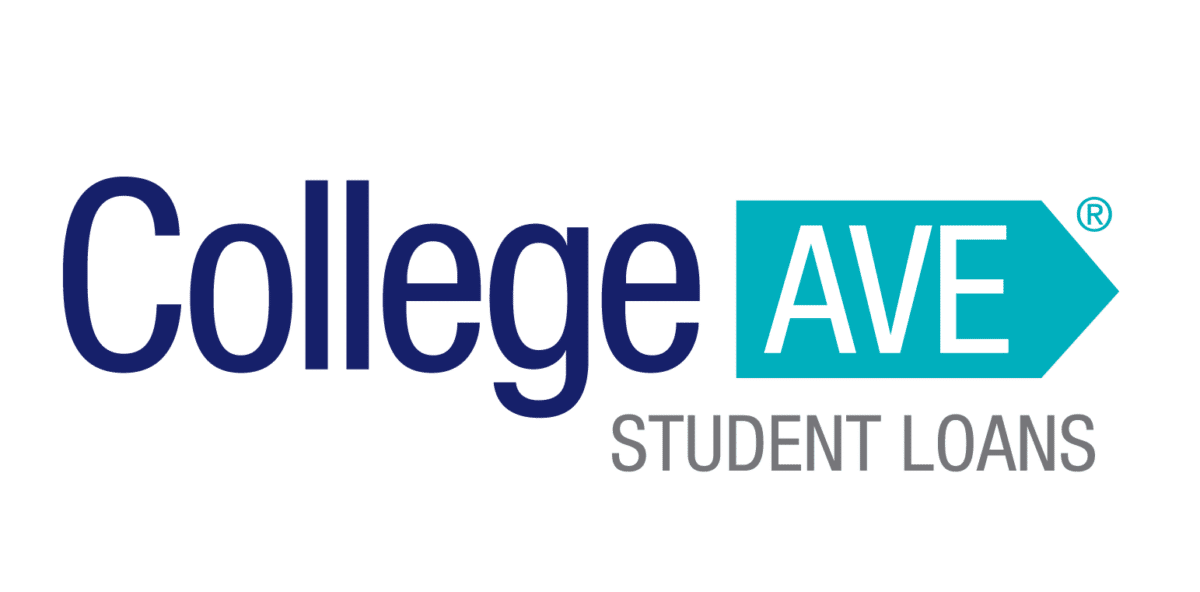
Preparing for college can be a stressful time. Figuring out what career path you want to follow is hard enough, but coming up with a plan to pay for college can take your stress to a whole other level.
One skill you’ll need to develop is how to apply for student loans. Loans will likely be a significant source of financial aid to pay for your college expenses. Here’s a quick guide on how to apply for federal and private student loans.
How to apply for federal student loans
Applying for federal student aid should be your first thought when planning to pay for college. The process is relatively straightforward, but you need to pay attention to deadlines so you can receive the maximum amount of federal student aid possible.

Step 1: Submit a FAFSA form
To receive any federal aid, you’ll need to complete the Free Application for Federal Student Aid (FAFSA). Submitting a FAFSA puts you in the running for financial aid for school, including federal and state funds. Prospective students will fill submit their FAFSA form the year before they are planning on attending school. Students reapply annually until the year before they graduate.
Submissions for FAFSA applications start annually in October. Try to fill out and submit your form soon after October 1st. Some federal and state aid is available on a first-come, first-served basis.
Gather any pertinent information before filling out your FAFSA form. Information you’ll need includes your:
- Federal Student Aid (FSA) ID
- Social Security number (or alien registration number if you’re not a U.S. citizen)
- Federal income tax returns
- W-2s
- Bank statements
- Investment records
- Records of untaxed income
If you are considered a dependent student, you’ll see the same fields on the form for your parents’ information, too.
To help students and parents through the FAFSA process, the Department of Education has created a couple of helpful tools:
- IRS Data Retrieval Tool: This tool allows individuals to transfer federal tax information directly to their FAFSA form.
- FAFSA4Caster: After providing some basic information, this tool will estimate how much federal student aid you may receive.
FAFSA forms can be filled out online, printed out and filled out by hand, or completed through the myStudentAid mobile app (available on iOS or Android). Once you’ve submitted your FAFSA, it will be processed by the Department of Education. Online submissions will be processed within three to five days. Mailed FAFSA forms are processed within seven to 10 days.
Step 2: Complete a student aid report
Once your FAFSA form is processed, you’ll receive a student aid report (SAR). This report summarizes the information you provided on your completed FAFSA form. Schools listed on your FAFSA use the information to help determine eligibility for financial aid.
Look over the report to make sure there are no errors and all of your information is complete. Having accurate information will ensure you will have access to the most student aid possible. To make corrections, log into the FAFSA website using your FSA ID and select, “Make FAFSA Corrections” on the “MY FAFSA” page.
There may be a note on your SAR that you’ve been randomly selected for verification. Sometimes your school will request verification documents directly. It’s a process in which the school confirms the information provided on your FAFSA. Provide the school with any required information by their deadline so you can still qualify for financial aid.
Step 3: Receive a financial aid award letter
You’ll receive an award letter from any of the schools you were accepted to that were also listed on your FAFSA. This letter contains detailed information regarding financial aid you may receive. Assistance could come from federal, state, private and school sources.
Award letters may vary from school to school because they are based on school costs. During this step, you (and possibly your parents) need to sit down and compare the financial aid packages from each of the award letters received. After looking at all of the information, you can choose to accept or decline the offers.
There is also an option to appeal your financial award package. If you received less from your desired school than you need, you might be able to get additional aid by appealing for more aid. The appeals process typically goes through a school’s financial aid office and varies from school to school.
Step 4: Accept federal aid
When you have chosen the school you want to attend, the next step is to accept federal aid by signing a promissory note. You’ll sign a promissory note for any loans you’re accepting. This is a legal document that lists your loan lender and the terms and conditions of your student loans.
When accepting student loans, your college may ask you to complete entrance counseling before your loan money is disbursed. Entrance counseling walks you through the student loan process and your rights and responsibilities related to your student loans.
Federal student loans for undergraduate students
Undergraduate students have a few federal loan options to consider. Both Stafford subsidized and unsubsidized loans and available to students applying for loans in their own name. The main difference is that the Department of Education pays the interest on subsidized loans while you’re in school.
Another option is Parent PLUS loans, where the debt would be in the parents’ names. PLUS loans allow you to borrow up to the cost of attendance. Beware of high interest rates and fees with Parent PLUS loans. Make sure you know what you’re getting into before signing up.
Federal student loans for graduate students
Graduate school and professional school students typically do not receive merit-based aid or grants. Federal options for graduate students include Stafford unsubsidized loans and Grad PLUS loans.
Graduate students can take out as much as they want up to the cost of attendance. You should only take what you actually will need for tuition and expenses.
How to apply for private student loans
Private student loans are a useful way to bridge the gap when your federal aid options are maxed out. Unlike with federal loans, you don’t just fill out one form to get loan offer letters from multiple lenders. Instead, you need to do the legwork of finding and comparing private loan options to see if you meet lenders’ eligibility requirements. Here are the steps to apply for private student loans, once you know how much you need to borrow.
Step 1: Compare private lenders
Private lenders include banks, credit unions and online lenders. When looking for private student loans, it’s essential to take time to compare lenders.
Check out our guide to the nine best private student loan options for help finding a lender. As you are comparing private lenders, consider these factors:
- Origination fees
- Interest rates
- Repayment terms
- Eligibility requirements
- Discounts
- Cosigner release
Some private lenders allow you to prequalify, which will enable you to see what interest rate you may receive if you apply. This process involves a soft credit pull, which doesn’t affect your credit score negatively.
Step 2: Apply for private loans
Private student loans are applied for directly through the lender. Once you’ve selected a lender, reach out to them in person or through their website to apply. You’ll need personal and financial information handy when applying. Information you may need includes:
- Social Security numbers
- Personal information
- Gross annual income
- Your latest tax return
- Your latest pay stub
- Employment history
When applying online, the process is straightforward. Typically, you’ll receive a response within 15 minutes of applying.
Most applicants will need a cosigner to qualify for a private loan. Almost 90% of undergraduate students require a cosigner for private loans, and 60% of graduate students require one. Some private lenders that offer loans specifically for dental and medical school students don’t require a cosigner.
Step 3: Review terms
After a decision is made, you’ll hear back from the lender. They will let you know if you qualified for a loan, whether you need a cosigner, and details about your loan.
Take time to look over your loan terms and conditions carefully. If you are ok with the private loan details, move on to accepting the loan.
Step 4: Accept the private loan
All that’s left is to accept your new private loan by signing the necessary paperwork. Then your loan funds will be disbursed directly to you. When taking on private loans, only take what you need to borrow to pay for school tuition and expenses.
Federal vs. private student loans
When you are looking for financial aid to pay for college, you should always look at federal assistance first, then move on to other options such as private loans. Federal grants and scholarships can provide free money for school. If you get federal student loans through the government, you’ll have access to valuable programs and protections, such as:
- Student loan forgiveness
- Repayment plans
- Deferment
- Forbearance
Private loans are backed by financial institutions, not the government, so they don’t have access to these programs. Also, getting approved for private loans may be more difficult than getting federal loans. Approval for private loans is mostly credit-based, not need-based.
Other options to pay for college
As you’re learning how to apply for student loans, keep in mind that loans aren’t the only way to pay for education expenses. Here are a few examples of alternative ways to find money to pay for school.
Apply for scholarships
Scholarships are free money to use for college costs. After filling out your FAFSA form, you may receive scholarship offers as part of your financial aid package from your school.
Scholarships are a perfect way to pay for school without adding to your student loan debt. Typically scholarships are merit-based. Another place to find scholarship money is at College Scholarship Service Profile.
Apply for grants
Your financial aid package from your school may also include grant money from various programs, such as those designed to help students pursuing specific career fields. Grants are typically need-based, and requirements vary from program to program.
Scholarships and grants can come from a variety of sources, including federal and state governments, colleges, non-profit organizations, local sources, and more.
Seek financial advice before going to college
You need to learn how to apply for student loans, but you don’t need to go it alone entirely. Here are two sources that may help during your college financial planning process:
- Financial aid office: Your school’s financial aid office has information about the application process and where to look for financial aid. Keep in mind that they may not always offer the cheapest financing solution, but they do offer resources that can lead to more money for college.
- Pre-debt consult: Student Loan Planner® offers a pre-debt consult for people planning to attend college. We work with you to come up with a clear plan upfront that can help alleviate some of the anxieties you’ll face when planning how you’ll pay for college.
As you prepare for college, paying for your education needs to be addressed early on in the process. Learning how to apply for student loans is essential. Having a solid repayment plan early on can keep you on track as you pursue your education and career goals.
| Lender Name | Lender | Offer | Learn more |
|---|---|---|---|
| Sallie Mae |

|
Competitive interest rates.
|
Fixed 4.50 - 15.69%
Variable 6.37 - 16.78%
|
| Earnest |

|
Check eligibility in two minutes.
|
Fixed 4.67 - 16.15%
Variable 5.87 - 18.51%
|
| Ascent |

|
Large autopay discounts.
|
Fixed 4.09 - 14.89%
Variable 6.22 - 15.20%
|
| College Ave |

|
Flexible repayment options.
|
Fixed 4.07 - 15.48%
Variable 5.59 - 16.69%
|
